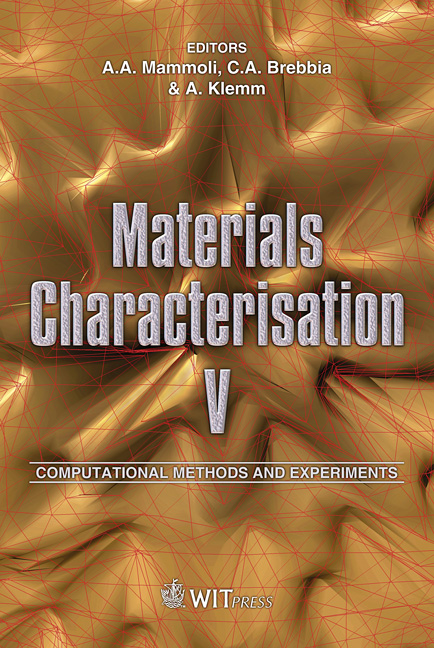Effect Of The Elastomer Stiffness And Coupling Agents On Rheological Properties Of Magnetorheological Elastomers
Price
Free (open access)
Transaction
Volume
72
Pages
12
Page Range
263 - 274
Published
2011
Size
858 kb
Paper DOI
10.2495/MC110231
Copyright
WIT Press
Author(s)
A. Boczkowska & S. F. Awietjan
Abstract
The reported studies are related to a new group of intelligent materials, such as magnetorheological elastomers (MREs), which are composites of ferromagnetic particles embedded in elastomer matrix. Studies on fabrication of MREs were carried out using two different polyurethane elastomers as a matrix, ferromagnetic particles and coupling agent. The matrices were differed in elastomer stiffness and hardness. As a ferromagnetic component carbonyl–iron powder with particle size of 6-9 μm was used. Particles were oriented into chains under the external magnetic field of 240 kA/m. Samples with anisotropic particles arrangement and particles volume fraction equal to 11.5% were examined. Microstructure of MREs was observed using Scanning Electron Microscopy. Structural and magnetic anisotropy of the MREs was derived from the magnetic studies. Rheological properties of the MREs, such as storage and loss modulus and loss factor, were characterized as a function of shear frequency and strength of the magnetic field. Absolute and relative magnetorheological effects were calculated taking the microstructure into account, which was formed in the course of the MRE fabrication, by changing the elastomer type and application of the coupling agent. As a result of the studies it was found that the MREs with stiffer matrix exhibit much lower MR effect than the soft ones. Also the application of coupling agent lead to a decrease of MR effect by the formation of bound elastomer surrounding the particles, which increases the stiffness of the matrix. Keywords: magnetorheological elastomers, polyurethanes, carbonyl iron, rheological properties, coupling agents, microstructure, magnetic properties, magnetorheological effect.
Keywords
magnetorheological elastomers, polyurethanes, carbonyl iron, rheological properties, coupling agents, microstructure, magnetic properties, magnetorheological effect





